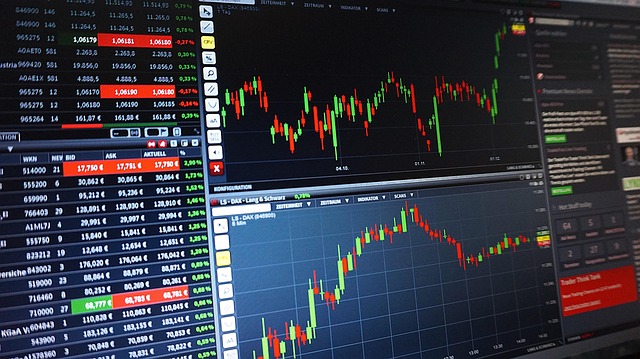What Is Volume in Forex Strategy and How It Affects Trading
Author: Jameson Richman Expert
Published On: 2025-08-06
Prepared by Jameson Richman and our team of experts with over a decade of experience in cryptocurrency and digital asset analysis. Learn more about us.
Understanding what is volume in forex strategy is fundamental for traders aiming to refine their decision-making process and improve their chances of success in the highly volatile and fast-paced currency markets. Volume, in the context of forex trading, represents the total number of currency units traded within a specific period, serving as a critical indicator that reflects market activity and trader engagement. It provides insights into the strength or weakness of prevailing price trends, assists in identifying potential reversals, and helps confirm the validity of ongoing trends.
Unlike stock markets or commodities exchanges, which operate through centralized venues reporting consolidated volume data, the forex market is decentralized and fragmented across numerous trading platforms and venues. This decentralization complicates direct measurement of true market volume. Instead, traders rely on proxies such as tick volume, broker-reported data, or aggregated trading activity across multiple platforms. Despite this limitation, volume remains a cornerstone of technical analysis in forex, offering valuable context for price movements and market sentiment analysis.

Deep Dive into Forex Volume and Its Significance
Volume in forex is a reflection of market participation — the higher the volume, the greater the number of traders actively engaging in a particular currency pair. Elevated volume often indicates strong trader conviction behind price movements, suggesting the trend may continue. Conversely, low volume can indicate market indecision, a lack of interest, or a potential reversal zone. This dichotomy allows traders to differentiate between genuine breakouts and false signals caused by low liquidity conditions.
Furthermore, analyzing volume in conjunction with price action can reveal the underlying market dynamics. For instance, a price rally supported by high volume often indicates institutional involvement and a higher likelihood of trend continuation. In contrast, a rally on low volume might suggest a lack of broad market support, increasing the risk of a reversal. Additionally, volume analysis helps in detecting exhaustion points where the current trend might be losing momentum, providing early signals for potential entries or exits.
Interpreting Volume in a Decentralized Market
Given the decentralized nature of forex, obtaining precise volume data presents unique challenges. Traders often depend on proxies such as:
- Tick Volume: Counts the number of price changes within a specific period, serving as an indirect measure of market activity. While not a direct measure of traded units, it correlates strongly with trading intensity and liquidity.
- Broker Volume Data: Some brokers, especially ECN (Electronic Communication Network) and STP (Straight Through Processing) providers, offer more accurate volume metrics based on actual trade data, which can be more reflective of true market activity. These data points are often aggregated and anonymized but provide a closer approximation of real trading volume.
- Volume Indicators: Analytical tools like On-Balance Volume (OBV), Chaikin Money Flow (CMF), and the Volume Oscillator process price and volume data to infer market participation levels, smoothing out the noise inherent in raw volume proxies. These indicators help identify divergence between volume and price trends, signaling potential reversals or trend continuations.
Utilizing Volume Indicators and Tools
Effective forex trading strategies incorporate volume analysis through a suite of technical indicators:
- On-Balance Volume (OBV): This indicator accumulates volume based on whether the price closes higher or lower, serving as a leading indicator of trend strength or divergence. Divergences between OBV and price can signal upcoming reversals or confirmations of trend strength.
- Chaikin Money Flow (CMF): Combines price and volume to measure buying and selling pressure over a specified period. A rising CMF suggests accumulation (buying interest), while a falling CMF indicates distribution (selling interest), aiding in reversal detection and confirming trend sustainability.
- Volume Oscillator: Calculates the difference between two moving averages of volume, highlighting increasing or decreasing market participation. Crossovers can mark potential trend shifts, providing early warning signals for traders.
Using these tools in conjunction with price analysis enables traders to validate trends, anticipate reversals, and filter out false signals, thereby enhancing overall trading accuracy. Combining multiple indicators can also improve reliability, as each provides different insights into market dynamics and liquidity flows.

Practical Application and Strategic Use of Volume
In real-world trading, volume analysis offers several practical benefits:
- Trend Confirmation: A breakout or breakdown accompanied by high volume signals strong market interest, increasing confidence in the move and reducing the likelihood of false signals. This is especially relevant in breakout trading strategies.
- Divergence Detection: When price makes new highs or lows without a corresponding change in volume, it indicates potential trend weakening or exhaustion, prompting traders to be cautious or prepare for a reversal.
- Reversal Signals: Sudden volume spikes at key support or resistance levels may indicate an impending reversal, providing strategic entry or exit points. These spikes often occur during news releases or significant economic events.
- False Breakout Prevention: Breakouts on low volume are often lack conviction and prone to failure. Traders can wait for volume confirmation before acting, reducing the risk of entering false signals.
Integrating Volume with Broader Market Analysis
While volume is a powerful analytical tool, its effectiveness increases when combined with other technical and fundamental analysis methods. Effective integration includes:
- Moving Averages: To identify trend direction and strength, especially when volume confirms crossovers or breakouts. Volume spikes accompanying moving average crossovers strengthen their signals.
- Relative Strength Index (RSI): To detect overbought or oversold conditions, particularly when volume spikes coincide with extreme RSI readings, signaling potential reversals or trend exhaustion.
- Fibonacci Retracements: To locate potential reversal levels that are validated by volume surges, adding confluence to trade setups and increasing the probability of success.
- Economic Calendars: To anticipate periods of increased volume driven by news releases, geopolitical events, or economic data, which often cause sharp price movements. Recognizing these periods allows traders to position themselves strategically.
For example, a breakout above resistance confirmed by high volume and RSI exiting oversold territory presents a high-probability trading opportunity. Recognizing such confluences enhances risk management and trade precision, leading to more consistent results.
Platforms and Resources for Volume Analysis
Several trading platforms and resources facilitate volume analysis, providing traders with vital data and insights:
- Binance: Cryptocurrency exchange with detailed volume metrics, useful for analyzing crypto-fx correlations. Provides real-time data and historical volume charts. Register here to access comprehensive crypto volume insights.
- MEXC: Offers robust volume and sentiment analysis tools, supporting diverse trading strategies. Features include order book data, liquidity metrics, and advanced charting. Use this invite link.
- BitGet: Provides advanced volume metrics, liquidity data, and trading competitions to gauge market participation. Offers detailed insights into order flow and market depth. Sign up via referral link.
- Bybit: Recognized for derivatives trading with sophisticated volume analysis tools, ideal for professional traders. Features include real-time order book data, volume heatmaps, and volatility metrics. Join using this link.

Conclusion: Enhancing Forex Strategies with Volume
Mastering volume analysis in forex trading involves more than just observing data; it requires understanding the context behind volume trends and integrating this knowledge into your broader analytical framework. By combining volume insights with technical indicators, fundamental factors, and market sentiment, traders can develop more resilient strategies that adapt to market dynamics.
Despite inherent challenges, advances in trading platforms and broker data services have significantly improved access to reliable volume proxies. Continuous learning and application of volume analysis techniques help traders identify potential turning points, validate trends, and optimize trade entries and exits. Leveraging platforms like Binance, MEXC, BitGet, and Bybit not only enhances your volume analysis but also deepens your understanding of liquidity flows and market participation, ultimately empowering you to make more informed trading decisions. Incorporating deeper insights into volume behavior, such as order flow analysis and dark pool activity (where available), can further refine your strategy, especially in institutional trading environments.